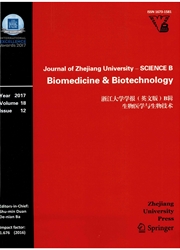

 中文摘要:
中文摘要:
肿瘤,特别是实体瘤,其内部微环境处于一种低氧或缺氧的状态,肿瘤的这种低氧微环境将诱导活化低氧诱导因子(HIF-1)信号通路。HIF-1信号通路在乳腺癌的转移中发挥着重要的作用。乳腺癌的转移涉及肿瘤细胞的浸润、进入血管、通过血液循环迁移、到达远端毛细血管内壁、穿透血管壁进入新的器官以及在新的部位形成转移灶等步骤,过程非常复杂。本文重点围绕HIF-1在转移各个步骤中的作用进行综述。
 英文摘要:
英文摘要:
Accumulating evidence has shown that the hypoxic microenvironment, which is critical during cancer development, plays a key role in regulating breast cancer progression and metastasis. The effects of hypoxia-inducible factor 1 (HIF-1), a master regulator of the hypoxic response, have been extensively studied during these processes. In this review, we focus on the roles of HIF-1 in regulating breast cancer cell metastasis, specifically its effects on multiple key steps of metastasis, such as epithelial-mesenchymal transition (EMT), invasion, extravasation, and metastatic niche formation. We also discuss the roles of HIF-l-regulated non-coding RNAs in breast cancer metastasis, and therapeutic opportunities for breast cancer through targeting the HIF-1 pathway,
 同期刊论文项目
同期刊论文项目
 同项目期刊论文
同项目期刊论文
 期刊信息
期刊信息
